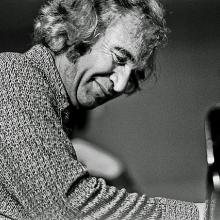Dave Brubeck
WHEN THE CHAOS gets too much, I listen to jazz. I’m not an aficionado. I just know that brave jazz refreshes my freedom. Lately, I’ve been listening to a lot of jazz.
The stay of execution offered by a COVID-19 vaccine allows for a giddy, perilous optimism. Even a minute crack in our coronavirus armor brings up emotions too dangerous, too chaotic to express: A trembling wave of the suffering we have endured, heavy across the shoulders like the splintery weight of the cross.
For ballast against overwhelming rage, I turn to The Five Quintets by poet Micheal O’Siadhail: “Be with me Madam Jazz I urge you now, / Riff in me so I can conjure how / You breathe in us more than we dare allow.”
"I approached the composition as a prayer," jazz pianist and composer Dave Brubeck said of his "To Hope! A Celebration," a contemporary setting for the Roman Catholic Mass, "concentrating upon the phrases, trying to probe beneath the surface, hoping to translate into music the powerful words which have grown through the centuries."
Probing beneath the surface marked all of Brubeck’s music, from the revolutionary 1959 polyrhythmic album "Time Out," to his oratorio, "A Light in the Wilderness," and his setting of Thomas Aquinas’ hymn, "Pange Lingua."
Brubeck died on Wednesday of heart failure, a day before his 92nd birthday.
Brubeck is best known in the secular jazz world for his startling compositions using different time signatures, such as 5/4 time in the classic "Take Five," or the mixture of 9/8 time and the more traditional 4/4 rhythm of "Blue Rondo a la Turk." Both pieces are on the "Time Out" album, the first jazz album to sell 1 million copies and still one of the best-selling.
Religious faith, however, was never far from Brubeck’s creative mind.

